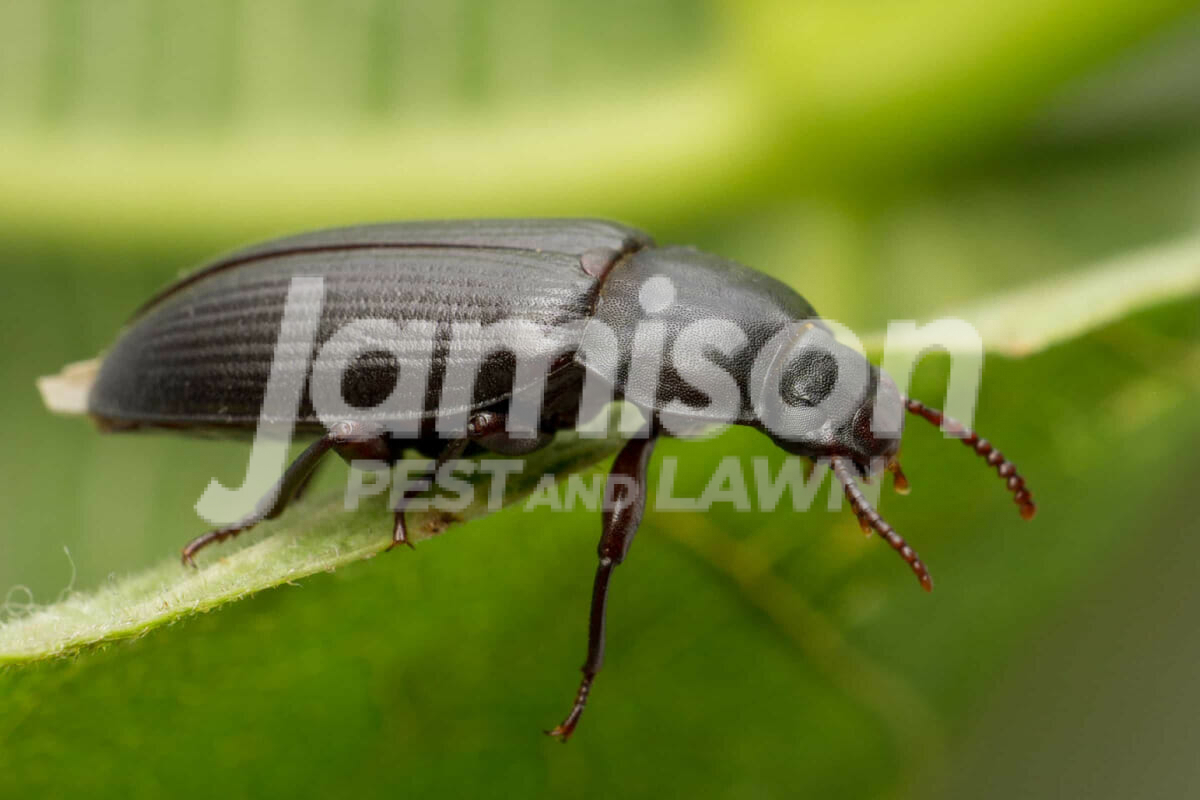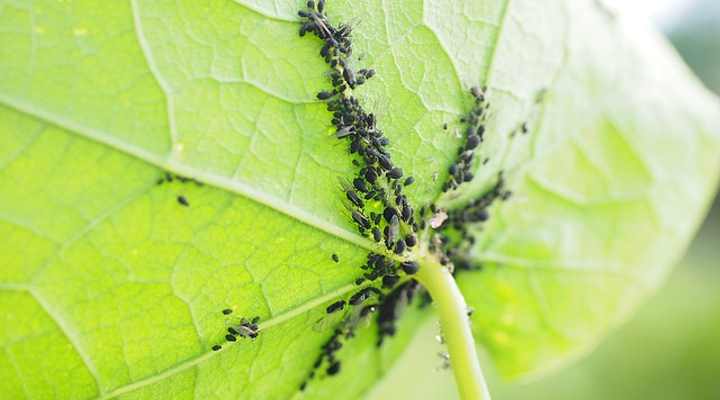Are you a homeowner with a lovely backyard? Having a lawn is a great addition to your home; you can use this space for many things, from grilling to bonfires.
There is nothing more peaceful than being outside in nature, surrounded by lush plants and bright flowers. But what happens when peace and tranquility are disrupted by the sudden appearance of pesky black bugs?.
These seemingly harmless creatures, usually aphids or fungus gnats, can quickly turn your garden oasis into a battleground. Through this detailed guide, we’ll show you how to get rid of these unwanted guests and get your plants back to their healthy, thriving selves.
It starts with just a few barely noticeable black specks on your plant’s leaves and stems. But before you know it, those tiny black bugs have multiplied into swarms, siphoning away nutrients and leaving sticky residues behind Chances are you’re dealing with aphids, one of the most prolific and destructive pests for indoor and outdoor plants alike. Learning to recognize, control, and prevent infestations is key to keeping your garden healthy
What Are Little Black Bugs on Plants?
While several species of tiny black insects may infest plants aphids are by far the most common. These sap-sucking pear-shaped bugs measure about 1/8 inch long when fully grown. Their dark color provides camouflage as they feed discretely on tender new growth. Aphids have piercing tube-like mouths that allow them to drain fluids from plant tissue.
Some species like bean aphids, melon aphids, and green peach aphids target specific plants, while others like the black citrus aphid have a wide host range. Regardless of their preferred hosts, aphids can quickly overrun a garden when not promptly controlled. Their populations explode because adult females can give birth to live young without mating.
Recognizing Aphid Infestations
Aphids tend to congregate on the undersides of leaves or inside curled foliage. But with heavy infestations, they’ll spread across all plant parts. Watch for these signs of an aphid invasion:
-
Tiny black dots moving slowly on leaves and stems
-
White cast skins shed during growth clinging to foliage
-
Sticky honeydew secretions coating leaves and stems
-
Sooty black mold developing on honeydew deposits
-
Curled, distorted, yellowing leaves and stunted shoot tips
-
Ant trails leading to plants, where they “farm” aphids for honeydew
Regular monitoring and prompt treatment at first signs of aphids is key to preventing major infestations. Use a magnifying glass to inspect for young nymphs that are easy to miss with the naked eye.
Dangers and Damage Caused by Aphids
Although individual aphids are miniscule, their feeding activity can have devastating effects:
-
Removal of plant sap stunts growth and distorts foliage.
-
Toxic salivary secretions cause curled leaves and damaged tissues.
-
Viruses like cucumber mosaic virus spread from aphid to plant.
-
Honeydew and sooty mold hinder photosynthesis.
-
Weakened, stressed plants are more vulnerable to other pests and diseases.
Left uncontrolled, aphids will rapidly reproduce and spread. Severe infestations can quickly kill young seedlings and smaller plants. Even mature plants may decline in vigor and productivity when large aphid populations persist.
Getting Rid of Aphids Naturally
Fortunately, eco-friendly treatment options can eliminate aphids without resorting to chemical pesticides:
-
Knock off clusters with a strong spray of water. Repeat daily to disrupt breeding.
-
Apply insecticidal soap or neem oil sprays to suffocate aphids on contact.
-
Dust plants with diatomaceous earth, which abrades the insects’ bodies.
-
Wipe leaves with diluted isopropyl alcohol using a cotton ball.
-
Attract ladybugs, lacewings, and other beneficial predatory insects.
-
Remove and destroy seriously infested plant parts to limit further colonization.
Combining multiple tactics improves control. Continue monitoring and retreat as needed until aphid populations dwindle. Also focus on preventive measures to limit future infestations.
Preventing Aphids Naturally
An ounce of prevention is worth a pound of cure when dealing with prolific pests like aphids. Proactively ward off infestations with these tips:
-
Rinse plants with water to dislodge new arrivals before they settle and reproduce.
-
Use row covers as physical barriers against aphids in vegetable gardens.
-
Control ant populations, since ants “farm” aphids for their honeydew.
-
Remove weeds that can harbor aphid populations.
-
Apply sticky traps near plants to catch dispersing winged aphids.
-
Schedule plantings to avoid periods when aphids are prevalent.
-
Prune for open structure and optimal air circulation.
-
Monitor regularly and treat at first signs of aphids before populations explode.
By taking a proactive stance, you can keep ahead of aphids and protect your plants from these destructive little black bugs. No garden is immune from aphids, but diligent monitoring and timely intervention can prevent them from wreaking havoc.
Getting Rid Of Tiny Black Bugs On Plants
Because these bugs are so small, you probably won’t even notice them if you garden and water your plants every day. The longer these pests stay on your beautiful plants, the more they will multiply and damage your garden.
So if you notice them, get started on removing them immediately. Take note of the following things:
What Are Black Bugs?
Picture this: It’s a nice, quiet summer morning, and you go outside to enjoy your coffee and relax. Amidst the lush foliage of your garden, a minuscule menace emerges. Tiny black bugs that have seemingly decided to call your plants their home. You may have been in this situation before. So what are these creatures?.

These unwelcome visitors are none other than aphids, nature’s tiny yet problematic pests. Do not be fooled by their small size; these smart bugs can quickly multiply and cause damage to your plants. Aphids feed on the sap in plant stems, which depletes your plants of nutrients and makes leaves turn yellow and curl.
How to Get Rid of Tiny Black Bugs on My Plants
FAQ
How do I get rid of little black bugs on my plants?
What kills black aphids on plants?
What do black mites look like?
What are the tiny black bugs that look like poppy seeds?
- The Ultimate Guide to Growing Strawberries in Raised Beds - August 8, 2025
- No-Dig Garden Beds: The Easiest Way to Grow a Beautiful Garden - August 6, 2025
- How to Protect and Preserve Wood for Raised Garden Beds - August 6, 2025

